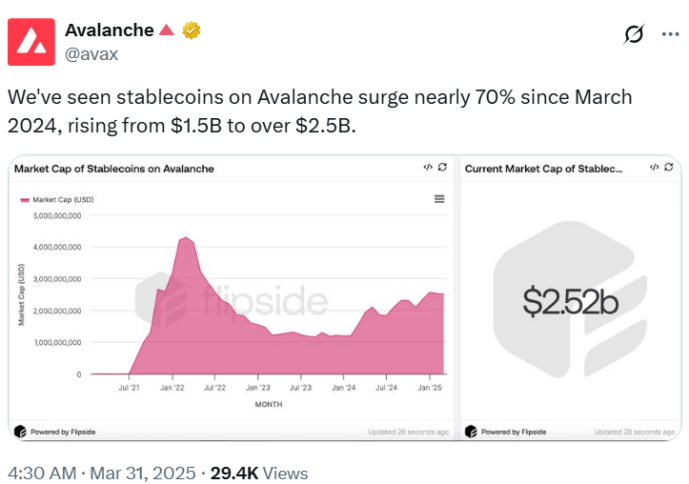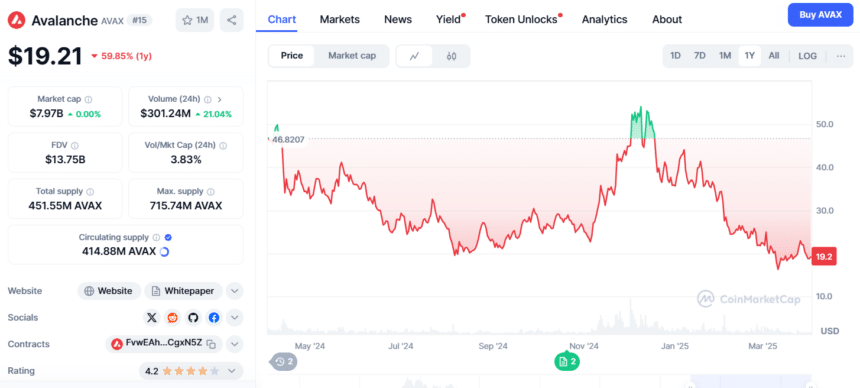Avalanche experienced a notable stablecoin supply surge over the past year, but passive on-chain use may be limiting demand for its utility token.

As per the post from the Avalanche, the supply has increased by over 70% in the past year, rising from $1.5 billion in March 2024 to more than $2.5 billion as of March 31, 2025.
Stablecoins are crucial in the crypto space because they act as a bridge between traditional (fiat) and digital currencies, often signaling increased buying activity and investor confidence.
Juan Pellicer, a senior research analyst at IntoTheBlock, explains that the issue is how the stablecoin liquidity is being used. A large share of the increase comes from bridged Tether (USDT), but instead of being actively used in DeFi for lending or trading, much of it remains idle in treasury holdings.
Despite a $1 billion rise in stablecoin supply, Avalanche’s AVAX token has fallen nearly 60% over the past year. The price has increased upto $$55.70, and it is now trading above $19.

AVAX’s price drop follows the broader crypto market downturn, driven by investor uncertainty. A key factor is former U.S. President Donald Trump’s upcoming April 2 announcement on new import tariffs aimed at cutting the $1.2 trillion trade deficit. These tariffs have unsettled markets, impacting riskier assets like cryptocurrencies.
Nansen analysts put the odds at 70% that the crypto market will bottom in the next two months as tariff negotiations continue and investor anxiety recedes.
Both the traditional and crypto markets are still weak in anticipation of the U.S. tariff announcement.
In a report released on April 1, Nansen observed that BTC and key U.S. stock indexes have been unable to overcome their 200-day moving averages, with shorter-term moving averages still trending downward.







